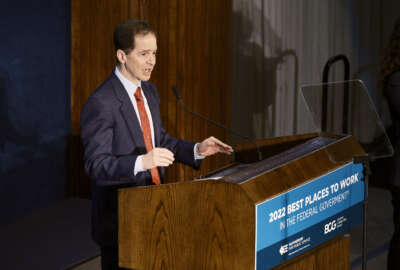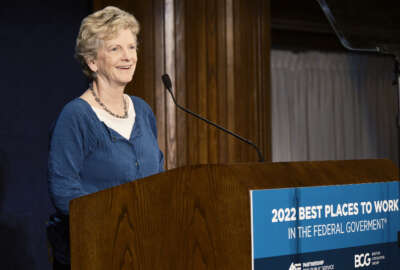
The worst place to work in the federal government
BOP must do simple things to makes itself a better place to work: Get to full staffing. Hire the right people. Update crumbling facilities. Sharpen the...
Follow the rest of Federal News Network’s series, The Worst Place to Work in the Federal Government.
Having a best place to work in the federal government means one agency must be the worst place. The Justice Department’s Bureau of Prisons achieved the lowest index, by far, in the rankings compiled annually by the Partnership for Public Service.
This week on the Federal Drive — broadcast in the Washington D.C. area and online — I present a series of interviews about the BOP. You’ll hear from everyone from Justice Inspector General Michael Horowitz and BOP Director Collette Peters, and from people who have worked deep within BOP. I hope you’ll tune in using whatever medium is most convenient.
One thing I learned in researching this series: BOP, which also made the Government Accountability Office’s biannual High Risk List this year, is not a total disaster. It has an extremely difficult mission. Its constituencies often conflict with one another: inmates, crime victims, families of inmates, a public highly divided over what constitutes acceptable criminal justice, reflected by an equally-divided appropriating Congress.
If you accept that incarceration itself constitutes punishment, then prisons, by the BOP’s own mission statement, should be humane and offer sufficient opportunities for prisoners with the motivation to better themselves so that when they get out, they don’t come back. The reverse of the roach motel. And yet such people must live in close proximity to irredeemably violent repeat offenders.
At the very center of this crucible, that’s where BOP’s 35,000 correctional officers and other prison staff work. BOP has for years and years been unable to meet its full staffing authority. Understaffing in prisons means nurses, teachers, anyone non-management may get pulled into patrol shifts among the prisoners. Or officers themselves work double shifts, or days-on-end shifts.
BOP has procurement, budgeting and capital improvement challenges. It exhibits management problems in a statutory responsibility for a program to reduce recidivism. In an interview with the Government Accountability Office’s Gretta Goodwin, we discussed these issues. I also interviewed Goodwin on longstanding BOP issues.
But this series is about working there. Employees give BOP a place-to-work index of 35. Compare that to 85 for highest-ranked NASA.
Officers and their union representatives cite the staffing shortfall as the single largest contributor to their lack of faith in the agency. They blame management, including the fact (as the GAO pointed out) that BOP had six directors in a period of six years.
Scores took a turn for the worse when the pandemic hit. Corrections officers and other prison staff were forced into close proximity to prisoners amid a shortage of personal protective gear, much less vaccines, which came 18 months later. The upshot: The Supreme Court will decide if it all constituted a hazardous duty condition.
Yet my interviews also showed a workforce that believes in the “care and custody” of inmates. Correctional officers can discern who can be helped to help themselves, and who won’t. At the maximum-maximum security facility known as ADX Florence, they deal with people, many of whose only way out will be in a coffin. But you’ll also hear this week from an inmate who rose out of Florence to eventually do non-profit work on sentencing reform for juvenile offenders. And you’ll hear from the former warden who knew and helped him.
Perhaps the correctional officers themselves best understand both the inmates and the challenges. They recognize whom they might be able to help. But they harbor no illusions about people who end up in federal prison. Earlier this month BOP noted Correctional Workers’ Week, which makes note of those who lost their lives on the job.
Employees are also aware of the occasional bad apples among their own ranks, both high and low. Why, just today a former BOP warden woke up on his first Monday in, of all places, a federal prison. Ray Garcia was convicted in late 2022 of sexually abusing female inmates under his custody at the Federal Correctional Institute in Dublin, California. He got a nearly six-year sentence. Five other prison employees — including the chaplain — were also convicted in connection with a facility that earned the sobriquet “rape club.” So there’s that.
BOP must do simple things to makes itself a better place to work. But they are hard, like lifting a heavy barbell: Get to full staffing. Hire the right people. Update crumbling facilities. Sharpen the anti-recidivism problems. Easy to visualize, difficult to do.
Check here daily through the week as we add interviews and, we hope, contribute to improvement of the worst place to work in the federal government.
Follow the rest of Federal News Network’s series, The Worst Place to Work in the Federal Government.
Copyright © 2025 Federal News Network. All rights reserved. This website is not intended for users located within the European Economic Area.
Tom Temin is host of the Federal Drive and has been providing insight on federal technology and management issues for more than 30 years.
Follow @tteminWFED
Related Stories






